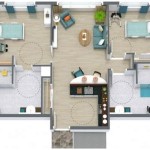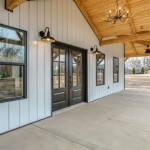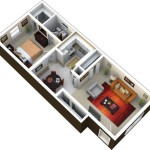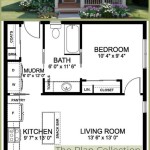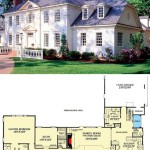A timber frame house plan serves as a detailed blueprint that outlines the architecture, structural design, and construction specifications for a house built using timber framing techniques. In this construction method, heavy timbers, typically made from Douglas fir or oak, form the structural framework of the house, providing exceptional strength and durability.
The use of large, exposed timbers in timber frame construction not only enhances the house’s structural integrity but also adds a distinctive aesthetic appeal. Each timber is carefully selected and joined using traditional joinery methods, resulting in a house that is both functional and visually striking.
As we delve into the specifics of timber frame house plans, we will explore the various design considerations, structural principles, and building techniques involved in creating a timber frame home. From selecting the right type of wood to ensuring proper ventilation and energy efficiency, we will provide a comprehensive guide to help you understand and appreciate the unique qualities of a timber frame house.
When considering a timber frame house plan, keep these key points in mind:
- Structural Strength
- Durability and Longevity
- Energy Efficiency
- Customizable Design
- Unique Aesthetic Appeal
- Environmental Sustainability
- High Resale Value
- Craftsmanship and Attention to Detail
- Timeless Architectural Style
These factors make timber frame house plans a compelling choice for those seeking a home that combines strength, beauty, and environmental consciousness.
Structural Strength
Timber frame house plans are renowned for their exceptional structural strength, which stems from the use of heavy timbers in the construction of the frame. These timbers, typically made from durable woods like Douglas fir or oak, are precisely cut and joined using traditional joinery methods, creating a framework that is both rigid and resilient.
- Exceptional Strength-to-Weight Ratio: Timber frames have an impressive strength-to-weight ratio, meaning they can withstand significant loads without becoming overly bulky. This allows for the creation of large, open spaces with minimal support structures, resulting in a more spacious and flexible interior layout.
- Resistance to Seismic Activity: The interlocking nature of the timber frame provides inherent resistance to seismic forces. The flexible connections between the timbers allow the frame to absorb and dissipate energy during an earthquake, reducing the risk of structural damage.
- Resilience to High Winds: Timber frames are well-suited for areas prone to high winds. The heavy timbers and rigid connections work together to create a structure that can withstand strong gusts without compromising its integrity.
- Durability in Extreme Weather Conditions: Timber frames are naturally resistant to rot, decay, and insect infestation. When properly treated and maintained, they can withstand harsh weather conditions, including extreme temperatures and moisture, ensuring the longevity of the structure.
The structural strength of timber frame house plans translates into peace of mind for homeowners, knowing that their house is built to withstand the test of time and the elements.
Durability and Longevity
Timber frame house plans are renowned for their exceptional durability and longevity, thanks to the inherent properties of wood and the construction methods employed.
Natural Durability of Wood
Wood, particularly hardwoods like oak and Douglas fir, possesses natural resistance to rot, decay, and insect infestation. The high density and tight grain structure of these woods make it difficult for moisture and pests to penetrate, ensuring the long-term integrity of the timber frame.
Furthermore, the natural oils present in wood act as a protective barrier against moisture and decay. This inherent durability allows timber frames to withstand the test of time and harsh weather conditions.
Traditional Joinery Techniques
Timber frame house plans utilize traditional joinery techniques that have been passed down through generations. These methods, such as mortise and tenon joints and dovetail joints, create strong and durable connections between the timbers.
The interlocking nature of these joints prevents the frame from racking or shifting over time, ensuring the structural stability and longevity of the house. The precision and craftsmanship involved in traditional joinery techniques contribute to the exceptional durability of timber frame homes.
Proper Maintenance and Treatment
While timber frames are naturally durable, proper maintenance and treatment are essential to ensure their longevity. Regular inspections and cleaning help to identify and address any potential issues early on.
Applying protective coatings or treatments to the exterior of the frame can further enhance its resistance to moisture, UV rays, and pests. By following proper maintenance practices, homeowners can ensure that their timber frame house remains durable and beautiful for generations to come.
Energy Efficiency
Timber frame house plans incorporate energy-efficient design principles to minimize energy consumption and reduce operating costs for homeowners. The inherent properties of wood and the construction methods employed contribute to the energy efficiency of timber frame homes.
1. Thermal Mass and Insulation
Wood has a relatively high thermal mass, meaning it can absorb and store heat energy. This property helps to regulate indoor temperatures by absorbing heat during the day and releasing it at night, reducing the need for heating and cooling systems.
Additionally, timber frame houses are typically well-insulated, using materials such as cellulose, fiberglass, or spray foam. Insulation helps to minimize heat loss during the winter and heat gain during the summer, further enhancing energy efficiency.
2. Airtight Construction
Timber frame houses are constructed using airtight construction methods that minimize air leakage. This is achieved through careful attention to sealing around windows, doors, and other openings, as well as the use of weatherstripping and gaskets.
Airtight construction prevents warm or cool air from escaping the house, reducing energy loss and improving the overall efficiency of the heating and cooling systems.
3. Passive Solar Design
Timber frame house plans can incorporate passive solar design principles to take advantage of natural sunlight for heating. This can be achieved through the use of large windows facing south, which allow sunlight to enter the house during the winter months and warm the interior.
Passive solar design reduces the need for artificial heating, further enhancing the energy efficiency of the home.
Customizable Design
Timber frame house plans offer exceptional design flexibility, allowing homeowners to create a house that truly reflects their unique style and needs. The modular nature of timber framing makes it easy to modify and customize the design to suit individual preferences.
Flexibility in Floor Plans:
Timber frame construction allows for open and flexible floor plans, as the heavy timbers can span large distances without the need for additional support structures. This flexibility gives homeowners the freedom to create spacious living areas, incorporate vaulted ceilings, and design rooms that flow seamlessly into one another.
Customizable Exterior Designs:
Timber frames can be adapted to a wide range of architectural styles, from traditional to contemporary. The exposed timbers can be left natural or stained to achieve the desired aesthetic. Homeowners can also choose from various siding and roofing options to further personalize the exterior of their home.
Unique Interior Spaces:
The exposed timber frame can become a striking interior design feature. These timbers add warmth, character, and a rustic charm to the home. Homeowners can incorporate the timber frame into their interior design, using it as a focal point or as a complement to other design elements.
Sustainable Design Options:
Timber frame house plans can be designed to incorporate sustainable design principles. The use of wood as the primary building material aligns with eco-friendly construction practices. Additionally, timber frames can be integrated with energy-efficient features such as solar panels and geothermal heating systems, creating a home that is both stylish and environmentally conscious.
Unique Aesthetic Appeal
Timber frame house plans offer a unique aesthetic appeal that sets them apart from other types of construction. The exposed timber frame creates a striking visual impact, both inside and outside the home.
Exterior Beauty
The exposed timber frame on the exterior of the house adds a touch of rustic charm and natural elegance. The heavy timbers, often made from durable woods like oak or Douglas fir, create a sense of warmth and solidity. The natural grain patterns and variations in the wood make each timber unique, resulting in a truly one-of-a-kind facade.
Interior Ambiance
Inside the home, the exposed timber frame becomes a captivating design element. The timbers add warmth, character, and a touch of the outdoors to the living space. The natural beauty of the wood complements a variety of interior design styles, from rustic to contemporary. The exposed frame can be highlighted with lighting to create a dramatic effect, or left in its natural state to add a touch of organic charm.
Customization and Flexibility
The modular nature of timber framing allows for endless design possibilities. The timbers can be arranged in various patterns and configurations to create unique and personalized spaces. Homeowners can choose from different types of wood, stains, and finishes to match their individual tastes and the overall style of the home.
Aging Gracefully
Timber frames age gracefully, developing a rich patina over time. This natural aging process adds to the home’s character and charm. Unlike other building materials that may deteriorate with age, timber frames become more beautiful and resilient as they mature.
Environmental Sustainability
Timber frame house plans embrace environmental sustainability, promoting the use of renewable resources and minimizing the ecological impact of construction.
- Sustainable Material:
Wood is a renewable resource that can be harvested from sustainably managed forests. Timber frames utilize wood from these forests, ensuring that the timber is replaced as it is harvested. The use of wood as the primary building material reduces the reliance on non-renewable resources such as concrete and steel.
- Reduced Carbon Footprint:
Wood sequesters carbon dioxide during its growth, effectively storing carbon in the timber frame. This carbon storage helps to mitigate the effects of climate change by reducing greenhouse gas emissions. Additionally, the use of wood in construction requires less energy compared to other materials like concrete or steel, further reducing the carbon footprint of timber frame homes.
High Resale Value
Timber frame house plans contribute to a high resale value due to several factors that enhance the desirability and longevity of the property.
- Durability and longevity:
As discussed earlier, timber frame homes are renowned for their exceptional durability and longevity. The robust construction methods and the natural durability of wood ensure that these homes stand the test of time, requiring minimal maintenance and repairs. This durability translates to a sound investment for homeowners, as the property retains its value over the years.
- Energy efficiency:
The energy efficiency of timber frame homes is another significant factor that contributes to their high resale value. The inherent thermal mass of wood and the airtight construction methods employed in timber framing minimize energy consumption and reduce operating costs for homeowners. This energy efficiency is highly desirable in today’s market, as buyers seek homes that are cost-effective to maintain.
Craftsmanship and Attention to Detail
Timber frame house plans demand exceptional craftsmanship and meticulous attention to detail throughout the design and construction process. The intricate joinery and exposed timber framework require skilled artisans who take pride in their work and strive for perfection.
Precision in Joinery
The structural integrity and longevity of a timber frame home hinge on the precision of the joinery. Skilled craftsmen use traditional joinery techniques, such as mortise and tenon joints and dovetail joints, to connect the heavy timbers securely. These joints are carefully cut and fitted to ensure a tight and durable connection without the use of metal fasteners. The interlocking nature of these joints allows the frame to withstand lateral forces, such as high winds and earthquakes.
Artistic Expression in Timber Selection
The selection of timber plays a crucial role in the aesthetics and durability of the home. Timber framers carefully choose each timber based on its strength, grain pattern, and natural characteristics. The placement of each timber within the frame is carefully considered to create a visually appealing and structurally sound framework. The exposed timbers become a defining feature of the home, showcasing the natural beauty and variations of the wood.
Customization and Design Flexibility
Timber frame house plans offer unparalleled design flexibility, allowing homeowners to customize their homes to suit their unique needs and preferences. Skilled craftsmen work closely with homeowners to translate their vision into reality. The modular nature of timber framing enables the creation of intricate designs, vaulted ceilings, and open floor plans that would be difficult to achieve with other construction methods.
Legacy of Quality and Craftsmanship
A timber frame home is not just a house; it is a testament to the skill and dedication of the craftsmen who built it. The attention to detail and commitment to quality ensure that these homes stand the test of time, providing a lasting legacy for generations to come. Homeowners can take pride in owning a home that is both beautiful and built to the highest standards of craftsmanship.
Timeless Architectural Style
Timber frame house plans embody a timeless architectural style that transcends fleeting trends and endures through generations. The enduring appeal of timber frame homes lies in their inherent beauty, structural integrity, and adaptability to various design aesthetics.
- Classic Craftsmanship and Enduring Beauty: Timber frame homes showcase the beauty of natural wood and traditional craftsmanship. The exposed timber framework creates a striking visual impact, both inside and out. The natural grain patterns and variations in the wood add a unique character to each home, making it a true work of art.
- Structural Strength and Longevity: Timber frame homes are renowned for their exceptional structural strength and durability. The heavy timbers used in the frame are joined using traditional joinery techniques, resulting in a robust structure that can withstand the test of time and harsh weather conditions. Timber frames are naturally resistant to rot, decay, and insect infestation, ensuring the longevity of the home.
- Adaptability to Design Styles: While timber frame homes often evoke a rustic or traditional aesthetic, they are incredibly adaptable to a wide range of design styles. The exposed timber framework can be complemented with various siding materials, roofing options, and interior finishes to create a home that aligns with the homeowner’s unique taste and preferences.
- Historical Significance and Cultural Heritage: Timber frame construction has a rich history dating back centuries. Many historical buildings and landmarks around the world feature timber frames, showcasing the enduring nature of this architectural style. Owning a timber frame home connects homeowners to a legacy of craftsmanship and tradition.
The timeless architectural style of timber frame house plans ensures that these homes remain desirable and valuable for generations to come. Their classic beauty, structural integrity, and adaptability make them an enduring choice for homeowners who seek a home that combines aesthetics, durability, and historical significance.










Related Posts



